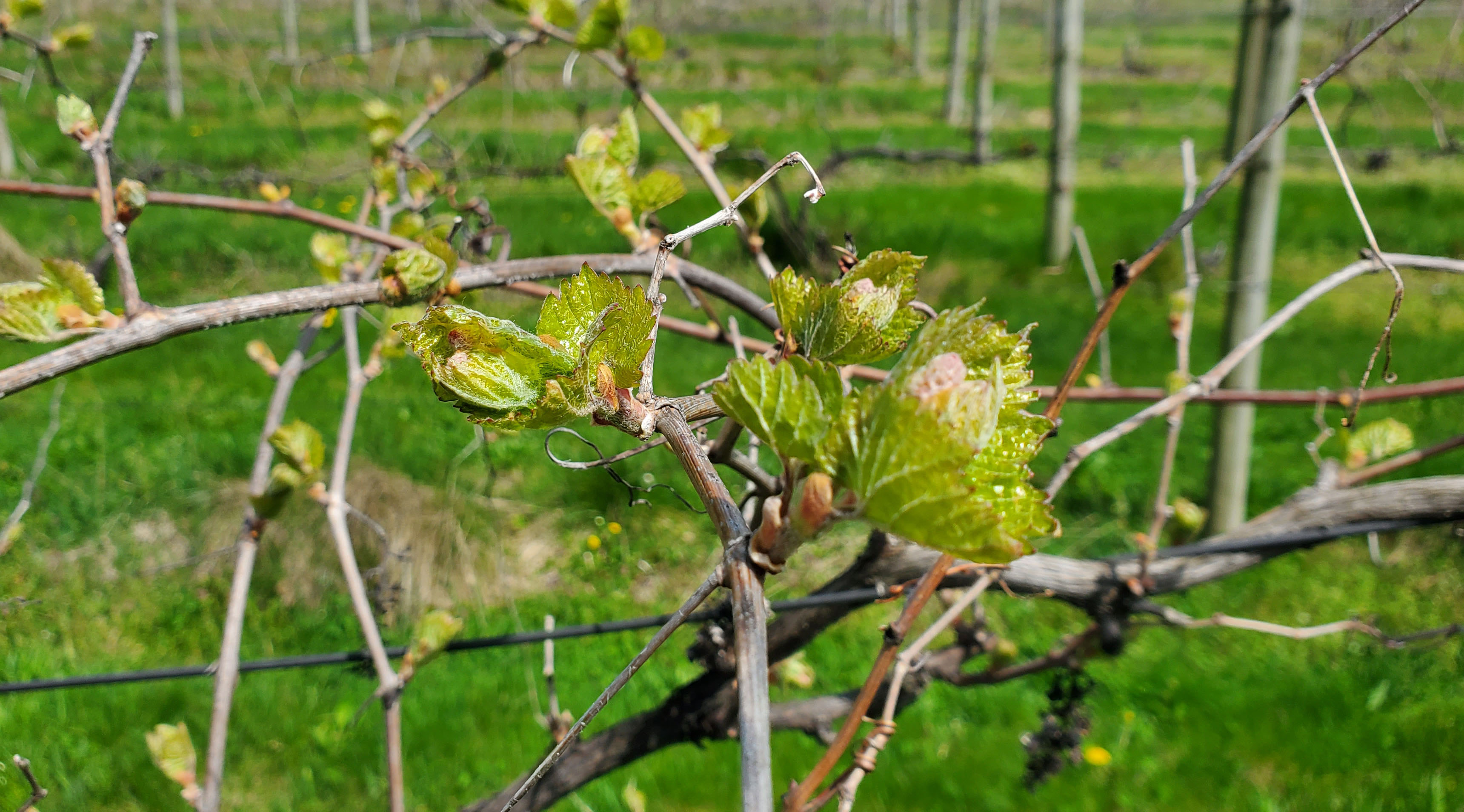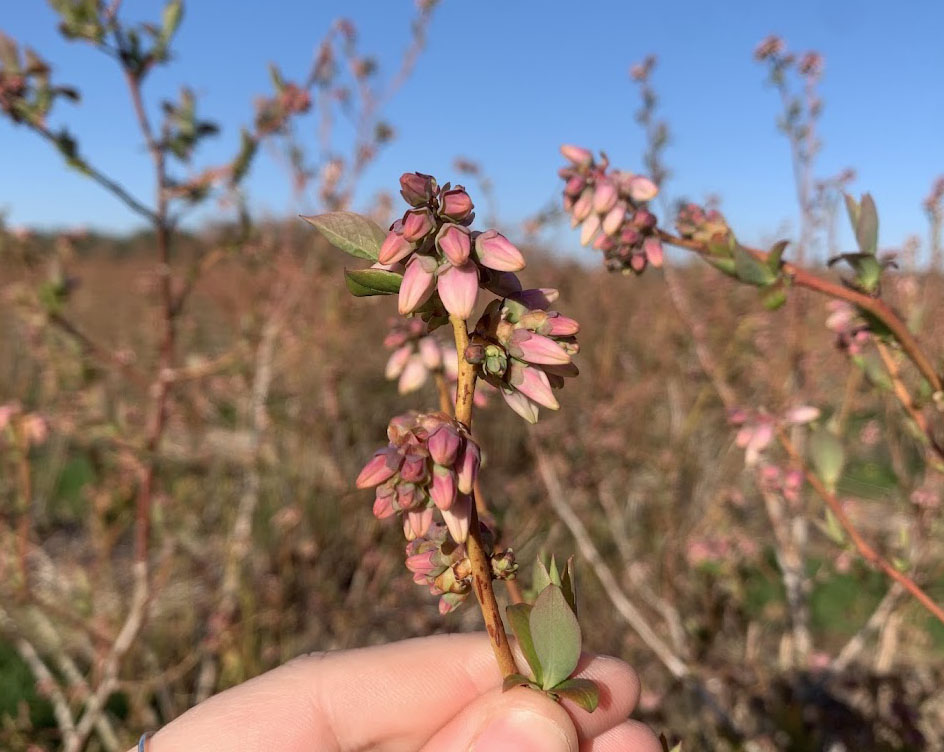Southwest Michigan fruit update – April 23, 2024
Warm weather is needed to help set crops for the many fruit types now in bloom in southwest Michigan.

Weather
Temperatures were more normal this past week with short rain events that generally were not sufficient to cause disease infections. Heat unit accumulation is one to two weeks ahead of normal, which has pushed fruit crop development ahead.
|
Southwest Michigan growing degree day (GDD) summary from March 1 – April 22, 2024 |
|||
|---|---|---|---|
|
Station |
GDD 42 F |
GDD 45 F |
GDD 50 F |
|
Benton Harbor (SWMREC) |
334 |
251 |
149 |
|
Lawton (Lawton) |
327 |
246 |
145 |
|
Fennville (TNRC) |
275 |
199 |
110 |
|
Grand Junction |
322 |
241 |
142 |
|
Average for the SW region |
319 |
239 |
140 |
Cooler air coming from the north/northwest for the next two days may pose some frost risks especially for northern areas of Michigan. The cool weather will be accompanied by some light rains, with some prospects of thunderstorms and possibly hail. A warming trend is expected to return to the area by Friday, April 26.
Watch the latest weather report from Michigan State University meteorologist Jeff Andresen.
Tree fruit
Flowers are opening and need good pollination weather while blooms are still viable. Retain treatments to prolong blossom life are still possible with apple and pear.
Apricots are emerging from the shuck, reducing the susceptibility to brown rot infections. Fruit are now vulnerable to insects with piercing mouthparts, such as tarnished plant bug and plum curculio.
Peach and nectarine are at petal fall in Berrien County and full bloom in Allegan County. The Trevor Nichols Research Center in Fennville, Michigan, reported first catch of oriental fruit moth (biofix 1) April 15 with an estimated biofix of April 12 for central Berrien County. Control is recommended at approximately 100-150 GDD base 45 F after biofix 1 for selective products with ovicidal activity or 170-195 GDD (10-15% of egg hatch) for organophosphates, carbamates and pyrethroids (check product) from the biofix date. Daily GDD base 45 is currently ranging from 5 on cool days to 20 on warm days. Pheromone disruption for first generation flight, if wanted, should be installed as soon as possible.
Protection against plum curculio and tarnished plant bug should start when fruit begin emerging from the shuck. Peach leaf curl symptoms are appearing in central Indiana now and should be visible perhaps next week in southern Michigan.
Cherry bloom has moved quickly with sweets at petal fall and tart cherries at full bloom. Tart cherries are mature enough for infection by cherry leaf spot in central Berrien County. The estimated start of cherry leaf susceptibility for central Berrien County is April 8 (250 GDD base 42 after Jan. 1). Brown rot can occur under a wide range of temperatures (40 to 86 degrees Fahrenheit), but optimal temperature is 64 to 78 F, with 4-plus hours of wet conditions. Fruit buds damaged by low temperatures in mid-January are starting to drop.
In plums, Shiro Japanese plum fruit buds are at late petal fall and Stanley European plum are in mid-petal fall in Berrien County. Fruit will be emerging from the shuck by next week and will be susceptible to curculio and plant bug attacks. Critical time for fungicide control for black knot is petal fall (usually mid- to late May) to late June (10-inch new shoot growth). Fungicide treatment must be combined with thorough pruning to remove knots. Like other stone fruit, brown rot infections are favored by temperatures in the 60s and 70s with rain.
Apples range from king bloom to 50% bloom. Retain (AVG) applications can help extend flower viability if cool conditions during bloom delay fertilization. Promalin treatment is another option to help preserve fruit production if borderline freeze conditions occur during bloom cause slight damage to flowers. Fire blight disease risk starts when temperatures above 65 F and rain occurs during bloom. The Maryblyt model on Enviroweather can be consulted for a prediction of upcoming infection periods. Apple scab ascospores continue to be caught in good numbers in area traps. Powdery mildew treatment begins at tight cluster for susceptible varieties, and juniper rust treatment at pink for orchards with junipers and cedars nearby.
Pear (Bartlett) is in full bloom with Harrow Sweet slightly behind in Berrien County. Continued scab sprays are needed to protect green tissue against infection. Fire blight management is needed for susceptible varieties when temperatures above 65 F and rain occurs during bloom. Fire blight resistance to streptomycin is widespread throughout most of the western Michigan apple and pear growing regions. A possible exception is the west half of Berrien County where strep resistance has not been detected, although testing has not been done in that region in recent years.
Small fruit
Grapes have moved a lot in the last week. Early hybrid varieties have one to two open leaves. Juice grapes are just beginning to open. Some earlier vinifera varieties have very swollen buds as well. There are more viable buds on vinifera grapes in Berrien County than initially expected due to the January cold event. Watch out for uneven bud break causing large areas of blind canes. Once green tissue is seen, it is too late for most dormant sprays.
Grape flea beetle and climbing cutworm can continue to be a concern until green tissue is visible. For those who are renewing trunks, this window is extended as latent buds can be slower to develop.

Blueberry bloom is looming! With bloom coming soon, it's important to remember our black and yellow friends, the bees, when planning sprays. Check out this Michigan State University Extension article about pollinator stewardship during fruit crop bloom. Down in Berrien County, a spattering of bloom was observed at the Southwest Michigan Research and Extension Center. From Paw Paw, Michigan, to the southern edge of Allegan County, we are observing early to late pink bud with plenty of green tissue popping up. Green tissue indicates the end of the window for dormant sprays.
Want more blueberry specific content? Subscribe to Blueberry Bites!

Strawberry flower trusses have begun emerging. Growers are looking at early season herbicides to control overwintering weeds. When selecting an herbicide, check the preharvest interval.
Bramble buds have separated from the cane and are starting to open. Some early varieties have expanded leaves. Lime sulfur treatments for anthracnose can still be applied to late bud break varieties, but phytotoxicity becomes a concern when green tissue is present.
Upcoming meetings
Our weekly Monday Night South Michigan Fruit IPM Meetings will once again be a hybrid format. The meetings will be held in-person at the Southwest Michigan Research and Extension Center, 1791 Hillandale Rd, Benton Harbor, MI 49022, with virtual attendance available online. Our next meeting is Monday, April 29, at 5:30 p.m. No advanced signup is needed for attending in-person. The meetings are free, and one pesticide applicator credit is available for each meeting.
The MSU Extension blueberry team will be hosting a Blueberry Pollination Meeting on May 15 the Trevor Nichols Research Center in Fennville.
Additional information and surveys
Michigan State University is running a pollinator survey this spring and summer to understand how people interact with pollinators in natural, urban and managed landscapes. The survey is anonymous and takes only 10-15 minutes to complete.
This work is supported by the Crop Protection and Pest Management Program [grant no 2021-70006-35450] from the USDA National Institute of Food and Agriculture. Any opinions, findings, conclusions, or recommendations expressed in this publication are those of the author(s) and do not necessarily reflect the view of the U.S. Department of Agriculture.



 Print
Print Email
Email
